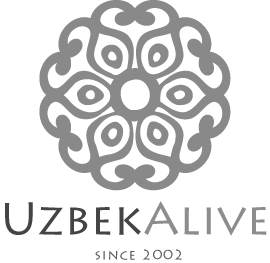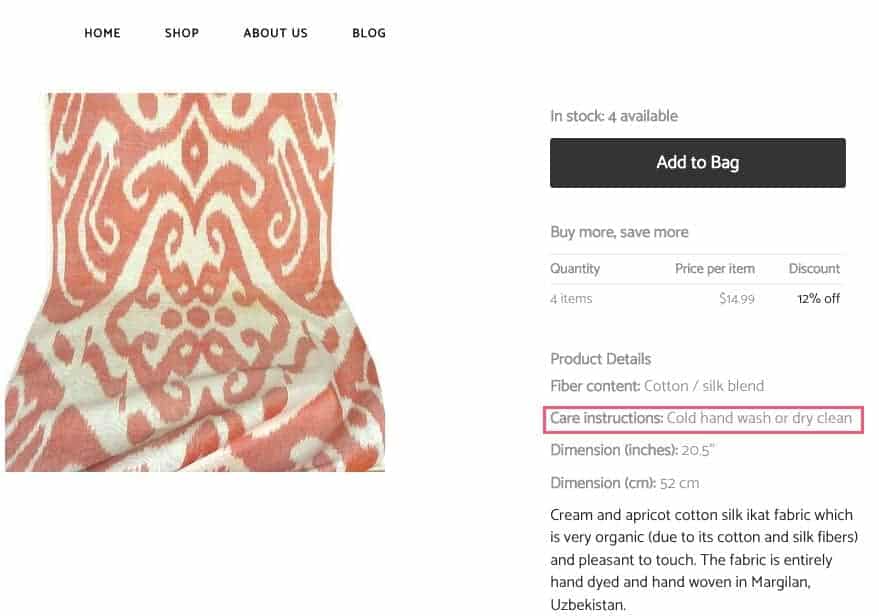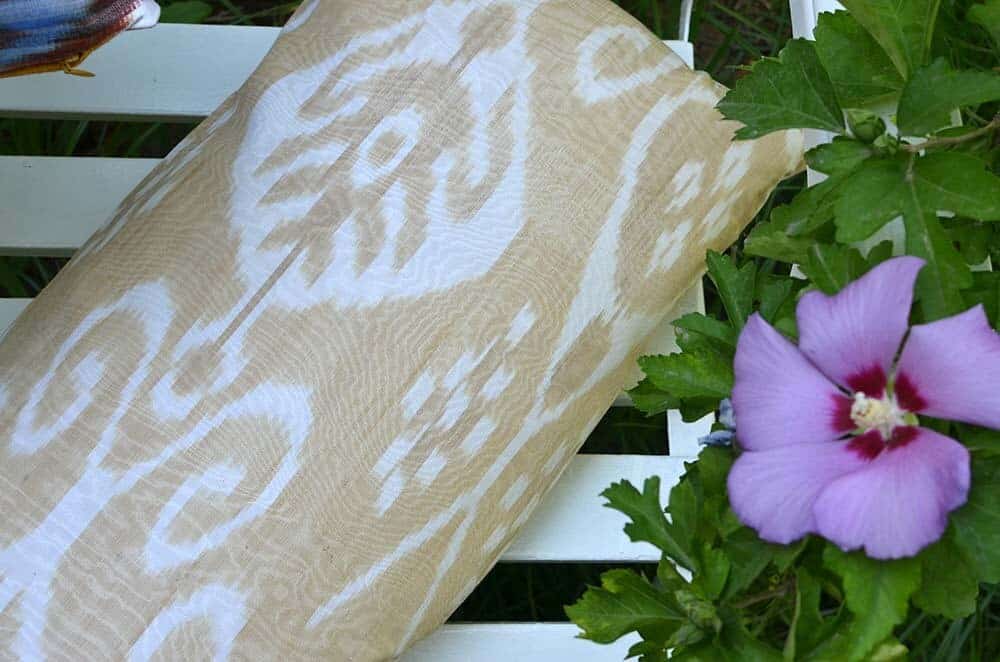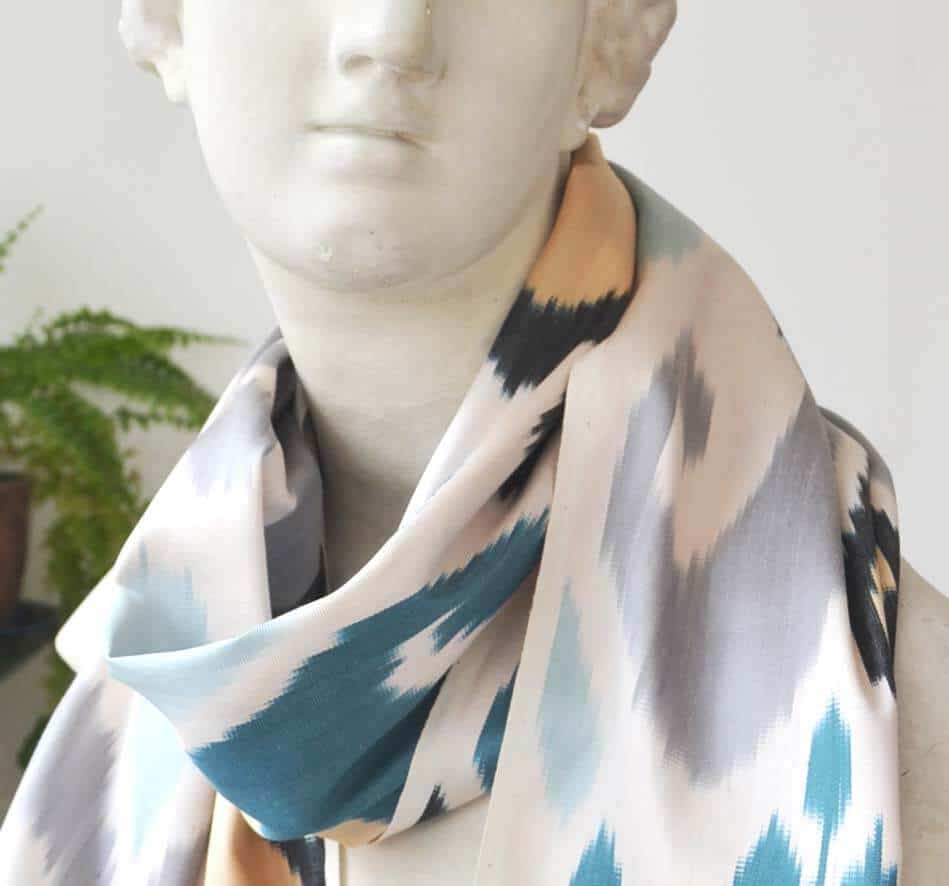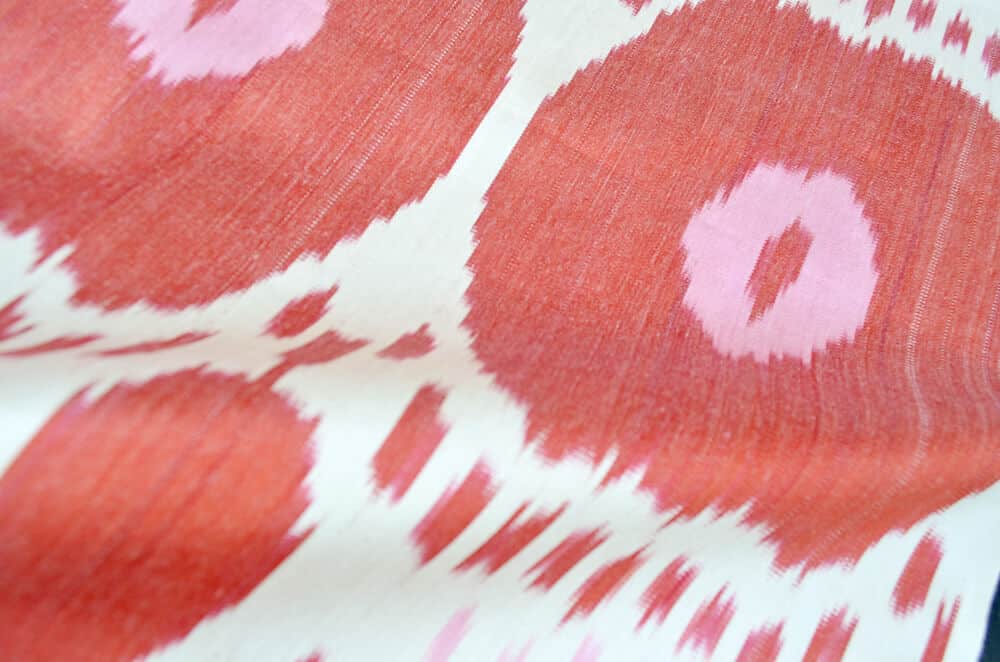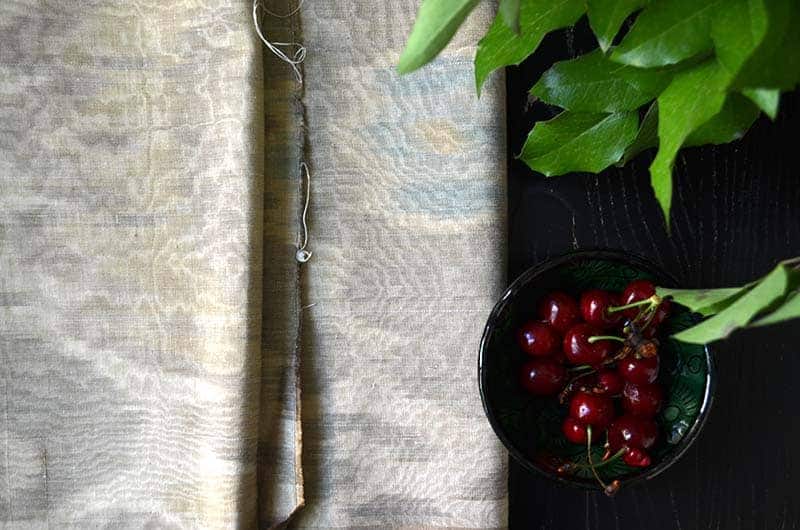
Uzbek ikat textiles – wash or dry clean?
Properly caring for ikat fabrics is the most important thing you can do to extend life of your textile products. In this post we would like to talk about washing ikat fabrics and in which cases you should consider washing versus dry cleaning. Let us start off with a bit of history.
A bit of history …
In the 19th century, a silk yarn was as expensive as gold, ikat making technique was known to a few and the ikat garments were amazingly pleasant to wear. These were the days when the ikat textiles were only available to the richest and were considered to be a true luxury item.
With time, the ikat makers thought of a way of making ikat textiles more, let’s say, democratic. They started combining luxurious silk yarns with a more affordable cotton fibers and created, so called, “adras” fabric. Adras is a beautiful and rich blend of silk and cotton fibers (usually around 50% silk and 50% cotton but percentages may vary). This brought the cost of the ikat fabrics down but by not that much – ikat fabric making still remained to be a highly manual process.
This manual process involves a finishing step called “calendar”. The calendar finishing uses a mixture of egg white with a special glue, which is evenly applied to a surface of a fabric and then pressed in calendar rollers. This process makes the fabric smooth, stiffer and glossier, adds a noble moire effect and serves as a protection against dust and dirt.
Ikats have not been touched by the industrial age
Industrial age with its machinery and mass production has not touched ikat fabric making. This is why, if a dress made of industrial woven fabric can be thrown in a washer hundreds of times, delicate ikat fabrics require more delicate care because the entire process of ikat making from A to Z remains as it was in the beginning of the 20th century. What changed with industrialization is dyes – the industrial age introduced partially colorfast chemical dyes and that’s the only part of the ikat making which is not sustainable. You can read more about sustainability of ikat fabrics in this blog post.
What happens when you wash ikat fabrics
Now let’s assume you decided to wash an ikat fabric. You are facing two risks:
- Colors may bleed – this is becoming less of a problem with new fabrics but there is still a chance of colors bleeding. This is why when you wash ikats, make sure you hand wash them in a cold water with a mild detergent.
- The fabric will lose its shape because the finishing white egg / glue mixture will wash off, moire effect will lessen and you will have a softer fabric. The fabric is still beautiful; it may be what designers are looking for to create that special worn and organic look. However, the washed fabric, in most cases, will not work for upholstery, for curtains, for anything that will require the fabric to hold its shape.
For these reasons, even though the care instructions for washable ikat fabrics are “cold hand wash with a shampoo” (read “How to care for ikat fabrics” blog post), it is still the best to get your ikat products dry cleaned. Here at UzbekAlive, if we say that the fabric is washable, it means “we ran a test, we washed the fabric, the colors will not bleed but if you want to maintain the shape, please dry clean”
Which of our Ikat products are definitely washable?
In a product description we have an area where we specify caring instructions. Here is an example how this area looks like:
Caring for ikat table runners
For our ikat table runners we make sure we use washable ikat fabrics. This does not mean that you can throw them in a washer with your jeans. No! Hand wash in cold water with a mild detergent is still the way to go because you are dealing with a hand woven approximately 50% silk and 50% cotton fabric. For the back of our ikat table runners we use unbleached cotton fabric, which is perfectly washable.
Wash ikat fabrics separately from everything else
As a general rule of a thumb, follow the following guidelines when it comes to caring for ikat fabrics:
Is maintaining a shape of the fabric important? If YES, take your garments to a dry clean. A good candidate for dry cleaning would be a jacket made of the ikat fabric. Jacket after washing will come out shapeless. If shabby-worn look is not what you are after, please take your jacket to a dry clean.
Otherwise,
- Hand wash ikat fabrics separately from all other fabrics,
- Wash in a cold water,
- Use a mild detergent.
- Wash separately from everything else
Washing ikat fabrics dyed with organic dyes
We have several fabrics, which are dyed using organic dyes like walnut shells, onion peels and pomegranate skin. These fabrics are also hand washable but separately from everything else. Overtime as you wash the ikat fabric some of the dyes will wash off and the fabric colors will be getting lighter and lighter.
Let’s consider Walnut Organic Ikat Fabric as an example:
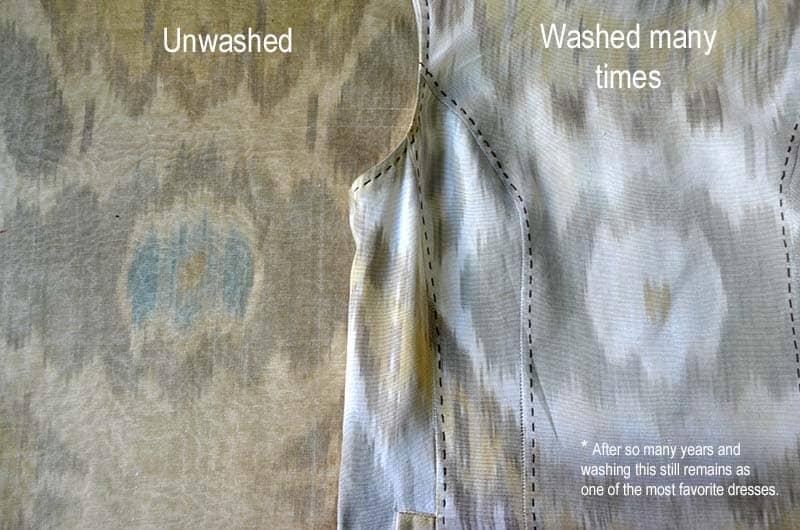
The same caring instructions are true for ikat pillow covers made of ikat fabrics dyed with organic dyes.
If you are after worn organic look…
If perfectly pressed and crisp fabrics are not your style and you feel more comfortable with a worn, soft, organic look maybe washing organic ikat fabrics is a way to go for you.
How about suzani?
How about caring for suzani, you may ask… There are vendors who sell suzani as washable. If washing a suzani product is important to you, ask a vendor to wash your suzani before buying. Otherwise assume it is dry clean only.
Caring for vintage or antique ikat fabrics
If you are dealing with old ikat fabrics, especially if these are fabrics of historic value, golden rule – dry clean only! Please don’t experiment with washing, you will ruin the fabric.
As always should you have any questions about our ikat fabrics please feel free to email us at [email protected]. We are just a message away.
